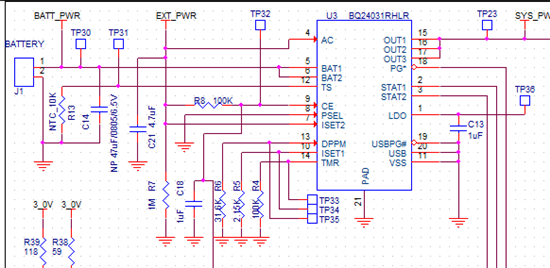Hello,
We designed in the BQ24071, but now have realized we need the charge voltage to be at 4.1V instead of 4.2V. The closest thing I could find to a drop in replacement is the BQ24031, which may work depending on how AC mode works.
The device has 2 power inputs, but I would only use 1. The power inputs found on the BQ24071 correspond to the AC inputs on the 24031. So if the AC input on the BQ24031 can be made to act like the power input on the BQ24071, it would drop in (USB and USB PG would be grounded in my case).
So, one thing I need clarification on is if when the BQ24031 is powered up from AC input, does the device follow USB boot up mode and limit the current to 100mA for a short period as the USB boot up feature describes? Table 1 of the BQ24031 datasheet shows the USB bootup feature is enabled for AC mode with PSEL low, but the datasheet does not specifically mention if current is briefly limited to 100mA in AC mode.
Thank you,
Jamaal


